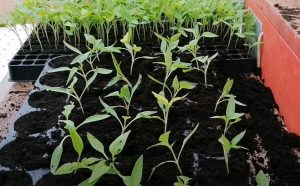The Kačarević family from the village of Vinča near Topola has a long tradition in fruit growing and the production of planting material. This business was started by grandfather Janko Kačarević as early as 1926, when, after graduating from secondary agricultural school in Bukovo, he introduced pottery in Vinča. At that time, the production was modest, including several thousand seedlings, but it was later expanded by Janko’s son Veljko and his grandsons, Verko and Željko, who today run the family business.
The Kačarevici are engaged in the production of apple and stone fruit seedlings, including apples, pears, quinces, medlars, plums, cherries, sour cherries, peaches, apricots and nectarines. The greatest demand is for plum and quince seedlings, while apples are the least sought after. In addition to modern varieties, there is increasing interest in old varieties of fruit, such as tangerine apples and pears, which the Kačarević family began to introduce into their offer.
Buying and selling planting material is still profitable
The production of planting material is not a simple process. It lasts two years and requires specific conditions, such as fertile soil and spatial isolation from fruit trees that are already being grown. Seedlings are grown along the Jasenica river, where the land meets the necessary criteria. The price of seedlings varies between 250 and 350 dinars, depending on the type and age of the seedling.

The ideal time for planting fruit trees is autumn, when the root system of fruit trees actively develops small veins, which increases the chances of successfully receiving seedlings. Spring planting, although possible, carries a greater risk due to a possible lack of water. Verko Kačarević points out that planting in November is the most intensive, but emphasizes that it must be completed before winter, while the land is not frozen or covered with snow. However, this year’s drought delayed the start of planting.
The Kačarević family produces between 70,000 and 80,000 seedlings per year, but sales vary from year to year. In addition to plums and quinces, apricots, sour cherries and cherries are often sought after, while interest in apples is less pronounced. Despite the challenges, the Kačarević family successfully maintain the tradition of nursery production and with their work contribute to the preservation of old varieties and the development of fruit growing in Serbia.
Source: 24 Seven
Source: boljazemlja.com


